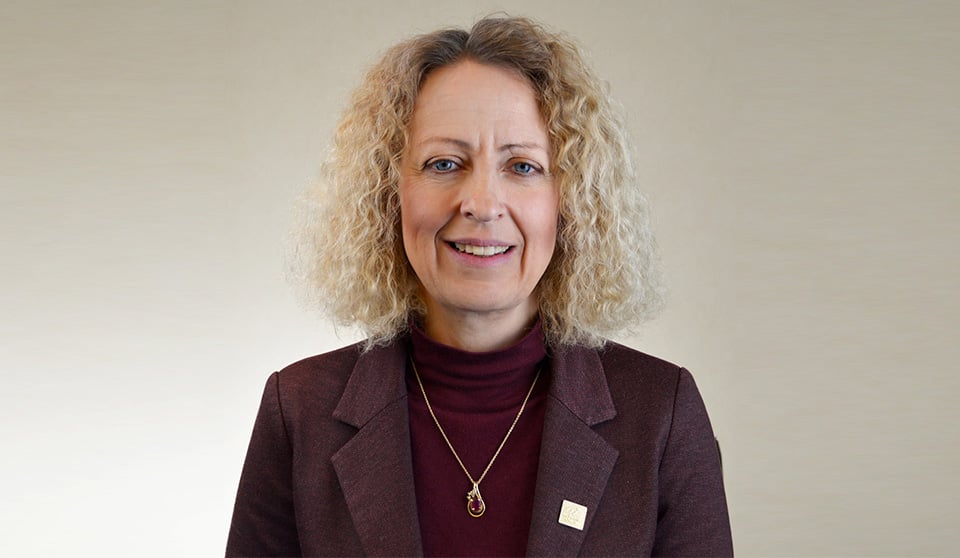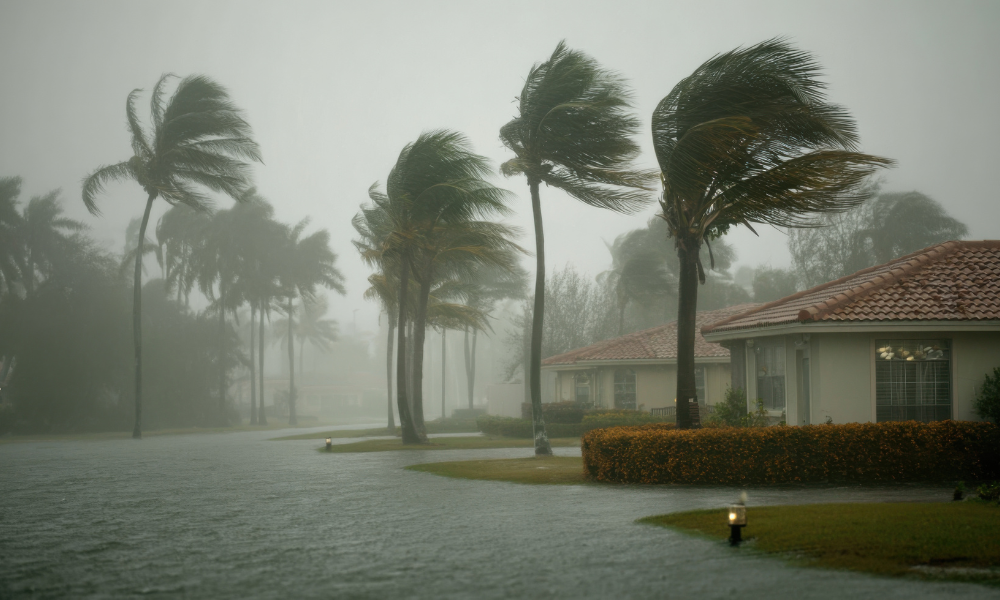Lisa McGuire is the CEO and founder of the Manufacturing Safety Alliance of BC

The Manufacturing Safety Alliance of BC was founded in December 2007 by Lisa McGuire. Initially, the organization was named the BC Food Processors Health and Safety Council; it was changed to its current name in 2016.
McGuire founded the Alliance after previously having experience helping individual organizations build effective health and safety programs. “I recognized the challenges companies endured with occupational and health and safety,” she says, “and I wanted to make a difference.” Her experience led McGuire to “see success not only in managing risk but also in building teams within an organization to reduce injuries and create a positive work culture.”
What is the aim of the Alliance?
The aim of the non-profit organization is to help B.C. manufacturers and food processors build and certify safety programs. The Alliance is WorkSafeBC’s certifying partner for the Occupational Safety Standard of Excellence (OSSE), which is the health and safety Certification of Recognition (COR) for manufacturers in B.C.
McGuire has a background in agricultural science and safety. Through her experience working with food processors, she recognized the need for health and safety support for the industry. “They were having a lot of challenges and a high injury rate, with more than seven out of 100 being injured every year,” she says.
The organization started as a committee “and, over time, created the connections and outreach to garner support,” says McGuire. From there, the Alliance doubled its membership beyond food to serve manufacturing industries.
Ultimately, the organization’s goal is “to make a difference in the lives of people employed in the manufacturing sector by bringing workers home to their families safely. A dedicated team serves industry to do just that, providing help and support in the area of health and safety,” she says. This includes building tools, resources and training as well as providing onsite advisory help. Ultimately, this will help those in need build effective programs to protect their people, reduce costs and build sustainable organizations, McGuire says.
“Our vision,” she says, “is to partner with influential leaders to positively change workplace cultures, generating commitment for healthy and safe manufacturing in B.C.”
This is accomplished “by engaging, educating and empowering our members,” says McGuire. “The innovative health and safety programs, services and tools we develop support industry success and make a difference in workers’ lives. At the end of the day, it’s people at the end of those statistics.”
And the results are certainly there: McGuire says that there has been a significant reduction in injury rates over time. Looking between 2010 and 2018, for example, 4,367 workers were able to go home safely as a result of avoided time loss injuries in B.C. “If our members had continued operating the same way they were in 2010, more than 4,000 injuries would have occurred,” she explains. “These results are an important accomplishment for industry and we are very proud of them.”
What are the main issues the food and manufacturing sectors are facing?
There are three primary injury types where we see the most injuries in the food and manufacturing fields, says McGuire. First, musculoskeletal injuries (or MSDs) with the ergonomic risk inherent to the industry, followed by injuries related to machine guarding, such as getting caught, struck by or pulled in machines. Last, slips at the same level round out the top three for the sector.
This is consistent whether you work in the food industry or in other manufacturing industries, she says. These types of injurious can be serious, causing time loss and sometimes long-term impacts on the well-being of workers.
Mental health is another important consideration, McGuire says. “In the past, we looked at individuals who suffered a workplace injury, largely considering the impact to physical health, but every injury includes a mental component as well. “There is work to be done, she notes, on how we incorporate both when we are considering the impact and recovery for injuries.”
Especially now in the pandemic, mental health is a concern, says McGuire. “Uncertainty surrounding the virus creates anxiety. It is mentally challenging for many and for some more than others. Building a mental health strategy and programs that integrate with a manufacturer’s OHS management system is an important objective for the Alliance,” she says.
Everything works together, says McGuire. “The workplace culture is a reflection of how health and safety comes alive — through the interactions of people following safe practices. That’s why we work to impact culture. A health and safety program should not reside on a shelf but be a living, breathing way of life,” she says.
What can businesses and organizations do to mitigate the pandemic?
“Implementing an exposure control plan or COVID-19 safety plan allows organizations to operate while reducing the opportunity for transmission,” says McGuire.” An effective plan requires assessing risks, implementing controls, policies and effective communication plans, training staff and continuing to monitor to ensure the plan is working effectively.
“Leadership plays a critical role. Actions and decisions that consider the well-being of the workforce build trust,” says McGuire. It is that trust “that allows a company to adapt quickly to this changing, unknown landscape — to thrive as opposed to survive,” she says.
“Regular, clear communication is another essential ingredient, ensuring workers understand the changing environment and have a clear pathway to raise concerns, “McGuire says. “The joint health and safety committee plays a critical role in building the safety plan and communicating with staff. Use them as a critical resource for the organization.”
According to McGuire, “Knowledge is powerful. It really helps all of us understand better what to do when something happens.” She says it’s important to address negative assumptions and questions early.
In addition, she notes, it is crucial to incorporate mental health strategies for those who need additional help, ensuring that the organization is equipped to provide these services.
“There’s been a lot of conversations around how we are preparing our business for a second wave,” says McGuire. “From what Dr. Bonnie Henry has shared with us in B.C., it is not a matter of if but when, recognizing that every previous pandemic has experienced one.”
McGuire says the Alliance has been working to help prepare businesses to operate effectively under the “new normal” environment. “We need to get good at following our COVID-19 safety plan,” she says, “reviewing and revising it as needed to adapt to the virus risk in our area.
“You want to adopt processes to prevent complacency,” she says. “We need to remain vigilant because it can be a slippery slope if we stray from our safety protocols, and the impact is significant.” Observation, communication and an open environment that support questions and feedback are critical.
In anticipation of a potential outbreak, McGuire says, every business should consider developing a response plan. “Preparation is key, and with the approaching flu season, we need to be prepared.”
What is the future for the Alliance?
Like many organizations, the Alliance has sharpened its focus on the advantages offered by expanding digital platforms, offering virtual events, services and training to a broad audience that has expanded beyond both provincial and national borders.
The Alliance will be hosting a virtual, global conference Oct. 29-30. The Make it Safe 2020 Virtual OHS Conference + Trade Show (MakeItSafe.ca) will connect attendees and experts to address the changing health and safety needs of industry in the pandemic and recovery. International experts and supporters will share perspectives from across Canada as well as Mexico, Italy, Germany, Spain, New Zealand, the U.K. and the U.S. In 24 interactive sessions, speakers and panelists will address critical topics for executives, safety and HR professionals and youth.
“Presenting Make It Safe online allows us to bring expertise and perspectives together from around the world — and create opportunities for attendees to build new connections while sharing knowledge and experiences that we can adapt to our workplaces,” says McGuire.
“The pandemic has changed the world we live in today and that will impact how we operate safely tomorrow. We are hoping that the connections we all make at this conference will open the door to a world of new health and safety knowledge that will stay with us well beyond the pandemic.”
This article originally appeared in the Nov/Dec 2020 issue of COS.





